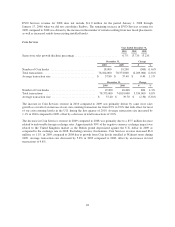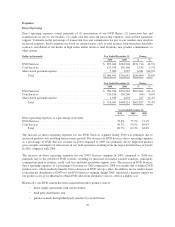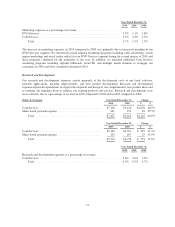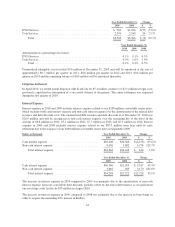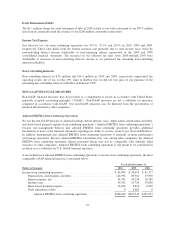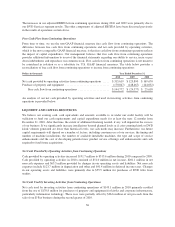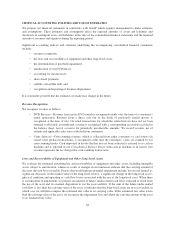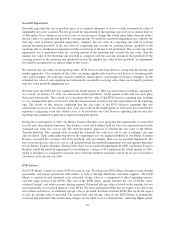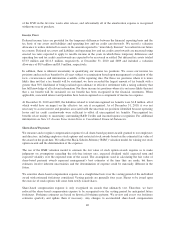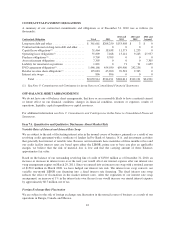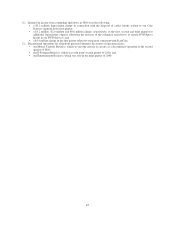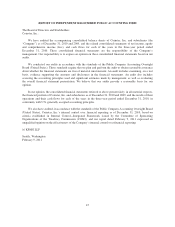Redbox 2010 Annual Report Download - page 46
Download and view the complete annual report
Please find page 46 of the 2010 Redbox annual report below. You can navigate through the pages in the report by either clicking on the pages listed below, or by using the keyword search tool below to find specific information within the annual report.CRITICAL ACCOUNTING POLICIES AND USE OF ESTIMATES
We prepare our financial statements in conformity with GAAP which requires management to make estimates
and assumptions. These estimates and assumptions affect the reported amounts of assets and liabilities and
disclosure of contingent assets and liabilities at the date of the consolidated financial statements and the reported
amount of revenues and expenses during the reporting period.
Significant accounting policies and estimates underlying the accompanying consolidated financial statements
include:
• revenue recognition;
• the lives and recoverability of equipment and other long-lived assets;
• the determination of goodwill impairment;
• amortization of our DVD library;
• accounting for income taxes;
• share-based payments;
• callable convertible debt; and
• recognition and reporting of business dispositions
It is reasonably possible that the estimates we make may change in the future.
Revenue Recognition
We recognize revenue as follows:
• DVD Services—Revenue from movie DVD rentals is recognized ratably over the term of a consumer’s
rental transaction. Revenue from a direct sale out of the kiosk of previously rented movies is
recognized at the time of sale. On rental transactions for which the related movies have not yet been
returned to the kiosk at month-end, revenue is recognized with a corresponding receivable recorded in
the balance sheet, net of a reserve for potentially uncollectible amounts. We record revenue, net of
refunds and applicable sales taxes collected from consumers.
• Coins Services—Coin-counting revenue, which is collected from either consumers or card issuers (in
stored value product transactions), is recognized at the time the consumers’ coins are counted by our
coin-counting kiosks. Cash deposited in kiosks that has not yet been collected is referred to as cash in
machine and is reported in our Consolidated Balance Sheets with cash in machine or in transit. Our
revenue represents the fee charged for coin-counting transactions.
Lives and Recoverability of Equipment and Other Long-Lived Assets
We evaluate the estimated remaining life and recoverability of equipment and other assets, including intangible
assets subject to amortization, whenever events or changes in circumstances indicate that the carrying amount of
the asset may not be recoverable. Factors that would indicate potential impairment include, but are not limited to,
significant decreases in the market value of the long-lived asset(s), a significant change in the long-lived asset’s
physical condition and operating or cash flow losses associated with the use of the long-lived asset. When there
is an indication of impairment, we prepare an estimate of future, undiscounted cash flows expected to result from
the use of the asset and its eventual disposition to test the recoverability. If the sum of the future undiscounted
cash flow is less than the carrying value of the asset, it indicates that the long-lived assets are not recoverable, in
which case we will then compare the estimated fair value to its carrying value. If the estimated fair value is less
than the carrying value of the asset, we recognize the impairment loss and adjust the carrying amount of the asset
to its estimated fair value.
38


